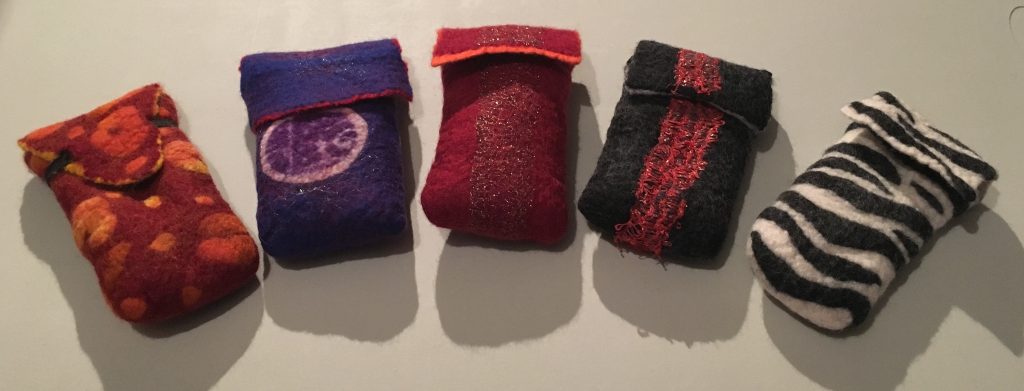The last few weeks have been a bit of a blur, the end of May was spent preparing for my inaugral participation in this event and the the first two weeks of June were the open studio event itself. It has been hard work but a lot of fun, meeting new people and sharing the magic of felt-making with them.
I confess, I have been thinking of hosting an open studio for several years but had plenty of excuses not to, the main one being that I usually work in my kitchen and dining room, not very practical spaces for hanging / displaying work and not really fair on Mr TB to have strangers milling about while he is trying to relax after a busy week at work.
I did consider using the garage but it isn’t a very pretty space (breeze-block walls) and where would I put all the stuff currently stored in there? Although if I am honest I think most of it should go on Freecycle or to the municipal dump. This year I had a bit of a brainwave, we live in a bungalow and have a guest bedroom at the front of the house, what if I put the guest bed in the garage for a couple of weeks?
The space worked better than I had dared to imagine, the mirrored doors on the wardrobes made the room feel large and airy and there was just enough wall space for most of my ready-to-hang pieces.
It was just large enough to demonstrate felt-making but I was rather ambitious to think I could squeeze up to four students in there for workshops, as it turned out I managed to arrange it so I never had more than one student at a time. As always seems to be the way, in the excitement of completing each case I completely forgot to take photos of their work but since I was teaching 1 to 1, I ended up making a case of my own alongside them, these are what I produced…
I made a short video tour of my “studio”, please come in….
What did I learn from this event?
- Allow yourself at least couple of weeks to prepare the studio, price your work, tidy the front garden / drive and redecorate / move furniture if necessary.
- Have a visitor’s book to collect emails so you can stay in touch with your new contacts. The open studio event is an excellent way to meet new people with a shared interest. I was surprised by the number of people who returned with a friend a few days later to show them what they had found.
- It took me a good hour to put out the signs, blow up balloons etc each morning, don’t under-estimate how long it will take. At least half of my visitors said they were just passing and saw the signs, they are really important!
- Most people paid by cash (and even had the right change) but I would have lost a couple of sales if I didn’t have a card reader.
- A friend told me she sells a lot of greeting cards at these events – that was a good tip, I had some professionally printed and it offered visitors the opportunity to support my work even if they did not have a lot of money to spare.
What will I do differently next time?
- I will bake some of my world famous chocolate brownies as little treats for my guests (if that isn’t incentive to get on a plane to visit me, I don’t know what is! 🙂 ).
- Be patient, most of my sales came in the last 2 days of the event.
- If I wasn’t running the event from my home, I would not open on a Wednesday, the footfall on Wednesdays was very low.
- I will allow longer for the teaching sessions, it always takes longer than you expect doesn’t it?
I hope I have inspired you to take the plunge and participate in your local open studio event, I have met so many wonderful people, from other artists participating in the event, to new and potential clients and some potential teaching opportunities.
I had better get on with moving the bed back into the bedroom, Mr TB is already eyeing the room suspiciously, thinking I have commandeered yet another “wool room”, what he doesn’t realise is that I have felting / textile paraphernalia stashed in EVERY room, but we will keep that to ourselves 😉



